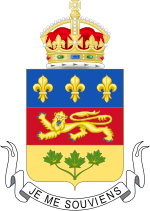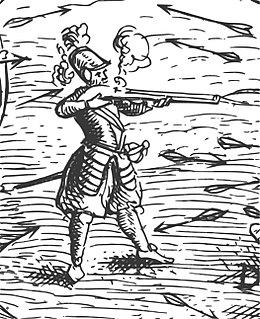
Samuel de Champlain was a French colonist, navigator, cartographer, draftsman, soldier, explorer, geographer, ethnologist, diplomat, and chronicler. He made between 21 and 29 trips across the Atlantic Ocean, and founded Quebec, and New France, on 3 July 1608. An important figure in Canadian history, Champlain created the first accurate coastal map during his explorations, and founded various colonial settlements.

New France was the area colonized by France in North America, beginning with the exploration of the Gulf of Saint Lawrence by Jacques Cartier in 1534 and ending with the cession of New France to Great Britain and Spain in 1763 under the Treaty of Paris (1763).

Paul de Chomedey, sieur de Maisonneuve was a French military officer and the founder of Fort Ville-Marie in New France.
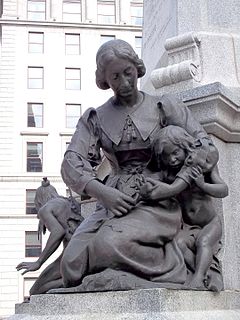
Jeanne Mance was a French nurse and settler of New France. She arrived in New France two years after the Ursuline nuns came to Quebec. Among the founders of Montreal in 1642, she established its first hospital, the Hôtel-Dieu de Montréal, in 1645. She returned twice to France to seek financial support for the hospital. After providing most of the care directly for years, in 1657 she recruited three sisters of the Religieuses hospitalières de Saint-Joseph, and continued to direct operations of the hospital.

Events from the 1630s in Canada.

Events from the 1640s in Canada.
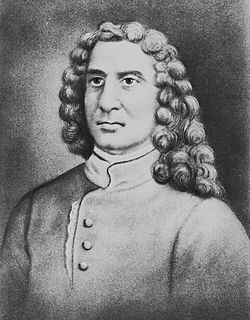
Charles Jacques Huault de Montmagny was governor of New France from 1636 to 1648. He was the first person to bear the title of Governor of New France and succeeded Samuel de Champlain, who governed the colony as Lieutenant General of New France. Montmagny was able to negotiate a peace treaty with the Iroquois at Trois-Rivières in 1645.
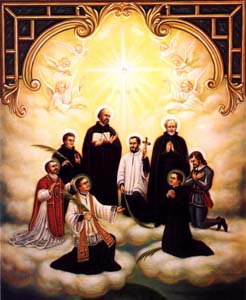
Saint Antoine Daniel was a Jesuit missionary at Sainte-Marie among the Hurons, and one of the eight Canadian Martyrs.

Saint Gabriel Lalemant was a Jesuit missionary in New France beginning in 1646. Caught up in warfare between the Huron and nations of the Iroquois Confederacy, he was killed in St. Ignace by Mohawk warriors and is one of the eight Canadian Martyrs.
The Recollects were a French reform branch of the Friars Minor, a Franciscan order. Denoted by their gray habits and pointed hoods, the Recollects took vows of poverty and devoted their lives to prayer, penance, and spiritual reflection. Today, they are best known for their presence as missionaries in various parts of the world, most notably in early Canada.

Louis d'Ailleboust de Coulonge was the French governor of New France from 1648 to 1651 and acting governor from 1657 to 1658. He built what is today known as Duke of Kent House, Quebec.
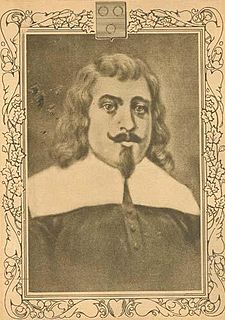
Jean de Lauzon or de Lauson was the governor of New France from 1651 to 1657, one of the most challenging times for the new colony. He also was born into being the lord of Lirec.

The history of Quebec City extends back thousands of years, with its first inhabitants being the First Nations peoples of the region. The arrival of French explorers in the 16th century eventually led to the establishment of Quebec City, in present-day Quebec, Canada. The city is one of the oldest European settlements in North America, with the establishment of a permanent trading post in 1608.
Father Simon Le Moyne, S.J. was a Jesuit priest who became involved with the mission to the Hurons in the New World. Le Moyne had 16 years of education and experience in the priesthood in France before his arrival in Quebec in 1638. During that same year, he headed out to his mission in Huron country. The destruction of the Huron nation by the Iroquois brought him back to Quebec in 1650. He undertook numerous missions to the Iroquois at great risk to his personal safety. He is most notable in Canadian history for his work as an ambassador of peace to the Iroquois.

Guillaume Couture was a citizen of New France. During his life he was a lay missionary with the Jesuits, a survivor of torture, a member of an Iroquois council, a translator, a diplomat, a militia captain, and a lay leader among the colonists of the Pointe-Lévy in the Seigneury of Lauzon, a district of New France located on the South Side of Quebec City.
Adrienne Du Vivier was a French pioneer and one of the first white women to settle in the colony of Montreal, Quebec, Canada. She and her husband are often referred to as "Montreal's First Citizens."

Jesuit missions in North America were attempted in the late 16th century, established early in the 17th century, faltered at the beginning of the 18th, disappeared during the suppression of the Society of Jesus around 1763, and returned around 1830 after the restoration of the Society. The missions were established as part of the colonial drive of France and Spain during the period, the "saving of souls" being an accompaniment of the constitution of Nouvelle-France and early New Spain. The efforts of the Jesuits in North America were paralleled by their China missions on the other side of the world, and in South America. They left written documentation of their efforts, in the form of The Jesuit Relations.
The timeline of the history of Montreal is a chronology of significant events in the history of Montreal, Canada's second-most populated city, with about 3.5 million residents in 2018, and the fourth-largest French-speaking city in the world.

The Société Notre-Dame de Montréal, otherwise known as the Société de Notre-Dame de Montréal pour la conversion des Sauvages de la Nouvelle-France, was a religious organisation responsible for founding Ville-Marie, the original name for the settlement that would later become Montreal. The original founders of the organization were Jérôme le Royer de la Dauversière, Jean-Jacques Olier and Pierre Chevrier. They were later joined by Paul Chomedey de Maisonneuve and Jeanne Mance. The organization's mission was to convert the Indigenous population to Christianity and found a Christian settlement, which would be later known as Ville-Marie.

Fort Ville-Marie was a French fortress and settlement established in May 1642 by a company of French settlers, led by Paul de Chomedey de Maisonneuve, on the Island of Montreal in the Saint Lawrence River at the confluence of the Ottawa River, in what is today the province of Quebec, Canada. Its name is French for "City of Mary", a reference to the Blessed Virgin Mary.
